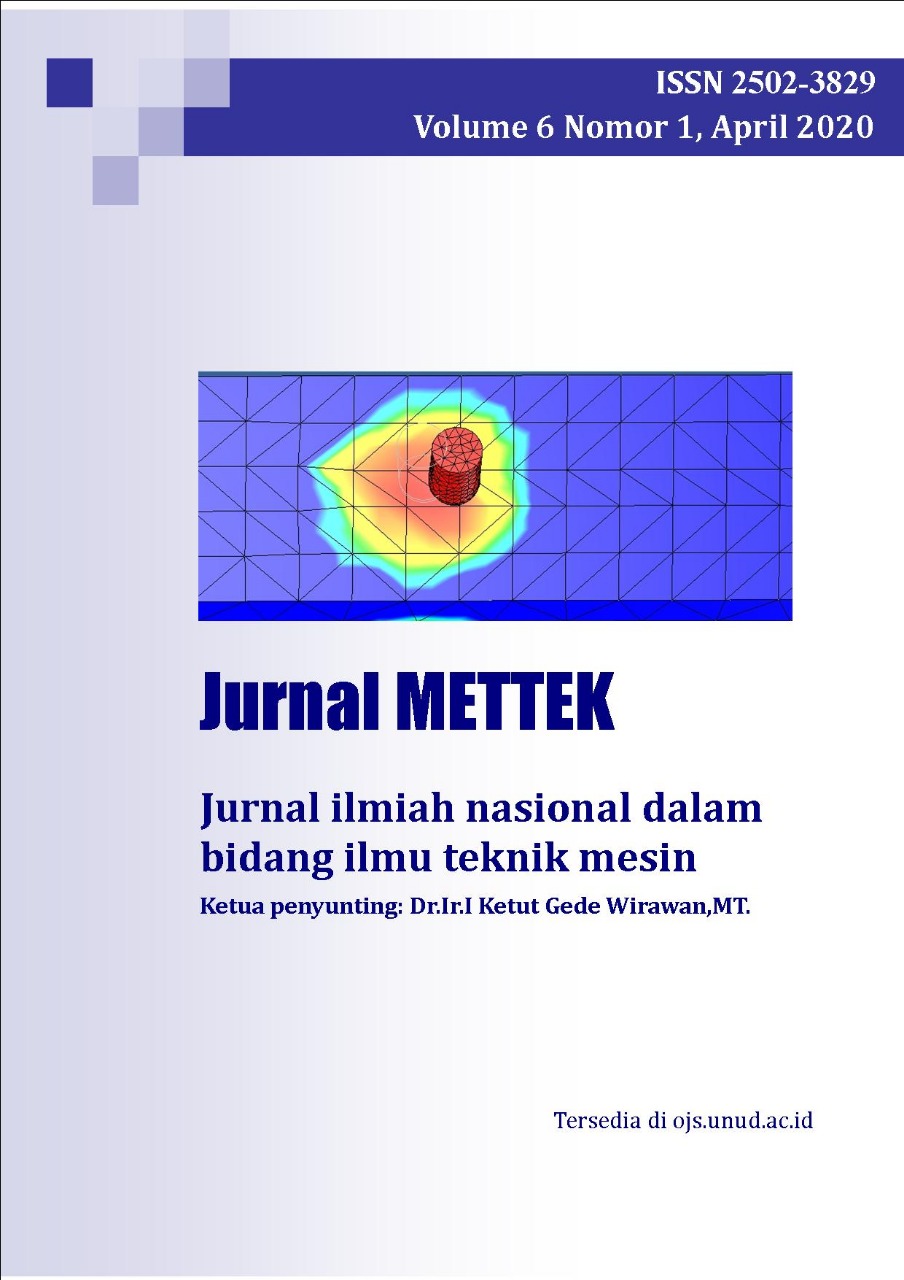Analisis Perbedaan Mesh Pada Simulasi Boiler PLTGU Tanjung Priok Berbasis CFD
Abstract
Penelitian Analisis Perbedaan Mesh berbasis Computational Fluid Dynamic (CFD) ini dilakukan Pada Boiler PLTGU Tanjung Priok. Boiler atau reboiler dalam sistem PLTGU dikategorikan sebagai alat penukar kalor karena perpindahan panasnya dilakukan tanpa kontak langsung antara media pemanas dengan media yang dipanaskan. Fluida kerja pada boiler PLTGU Tanjung Priok berupa gas methane dan air. Penelitian ini bertujuan melihat jumlah pembagian elemen terhadap hasil simulasi dengan menggunakan dua model Studi konvergensi grid yaitu dengan grid kasar, dan yang paling optimal melalui hasil simulasi CFD. Metode yang digunakan mulai dari mendesain geometri boiler sesuai kondisi di lapangan menginput initial conditions dan boundry conditions. Data hasil penelitian yang sudah di lakukan pada simulasi boiler menunjukkan bahwa baik temperatur, tekanan dan kecepatan aliran memiliki nilai yang sama besar dan tidak di pengaruhi oleh pembagian elemen yang di lakukan pada saat proses meshing dari elemen yang paling kasar dengan jumlah total sebanyak 203.363 sampai pada tahap proses meshing dengan elemen teroptimal yang berjumlah sebanyak 1.491.428 berdasarkan hal tersebut maka proses simulasi yang dilakukan menjadi lebih efisien karena proses perhitungan data dari elemen yang lebih sedikit mendapatkan hasil yang sama dengan elemen yang lebih banyak.
The research on Mesh Difference Analysis based on Computational Fluid Dynamic (CFD) was conducted at Tanjung Priok PLTGU Boiler. Boilers or reboilers in PLTGU systems are categorized as heat exchangers because the heat transfer is done without direct contact between the heating media and the heated media. The working fluid in the Tanjung Priok gas power plant boiler is in the form of methane gas and water. This study aims to look at the number of elements divided against the simulation results by using two grid convergence study models, namely with a coarse grid, and the most optimal through CFD simulation results. The method used starts from designing the boiler geometry according to the field conditions, inputting initial conditions and boundry conditions. Data from research that has been done on boiler simulations shows that both temperature, pressure and flow velocity have the same value and are not affected by the division of elements carried out during the meshing process of the most coarse elements with a total number of 203.363 up to the meshing process stage with the optimum elements totaling 1,491,428 based on this, the simulation process carried out becomes more efficient because the process of calculating data from fewer elements gets the same results with more elements.
Downloads

This work is licensed under a Creative Commons Attribution-NonCommercial-ShareAlike 4.0 International License.

This work is licensed under a Creative Commons Attribution-NonCommercial-ShareAlike 4.0 International License.







